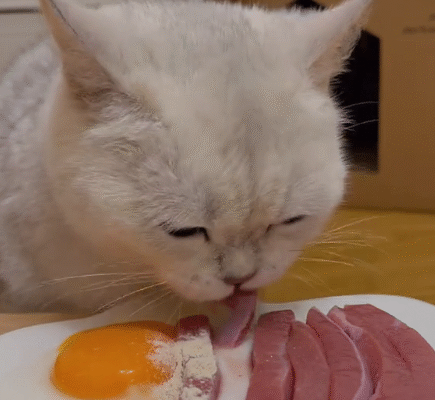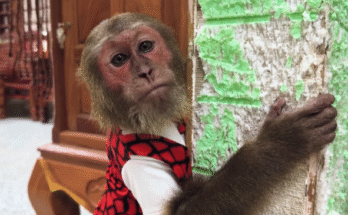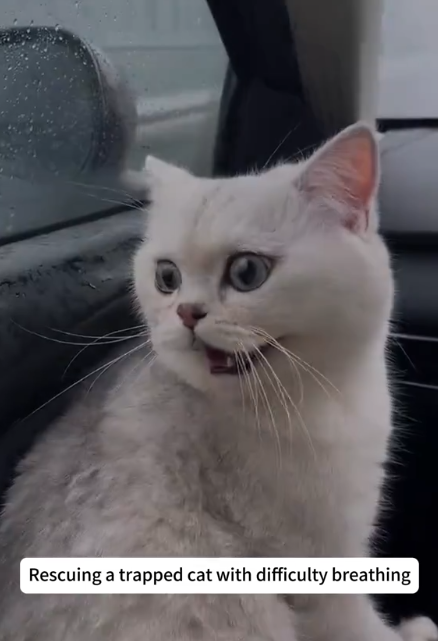
It was an unusually hot afternoon when I first heard the faint, desperate meows coming from the alley behind my apartment building. At first, I thought it was just a stray cat complaining about the heat. But as the minutes passed, the cries grew more frequent and more frantic. Something wasn’t right.
I grabbed a bottle of water and walked out to investigate. The alley was quiet except for the distant hum of traffic and the sound of flies buzzing around discarded trash. Then I heard it again—a strained, wheezy meow coming from the base of an old, rusted dumpster. I crouched down and peered underneath.
There, in the shadows, was a grey and white tabby cat wedged tightly between the dumpster and a broken pallet of bricks. The poor thing looked thin, frightened, and weak. Its chest rose and fell in shallow, rapid movements. The cat was clearly in distress—its breathing labored, eyes wide with panic.
I immediately called the local animal rescue line, but due to high call volumes and a shortage of staff, they told me it could be hours before someone could come. I knew the cat didn’t have that long. Every breath seemed to take enormous effort.
I rushed back inside and grabbed a pair of gloves, a small blanket, and my toolbox. I also filled a shallow dish with water, though I doubted the cat could drink in its condition. My heart pounded as I returned to the alley, determined to help.
I lay on my stomach and gently spoke to the cat, trying to calm it. “Hey buddy, I’m here to help you. Hang in there.” Its ears twitched at my voice, but it didn’t move. I reached in with gloved hands, trying to slide the broken pallet aside without collapsing it further. The wood was old and splintered, and each tug sent clouds of dust into the air.
As I moved the wood piece by piece, I got a clearer view of the cat. It was caught tightly, its midsection pressed against a jagged piece of metal. That explained the wheezing—perhaps a punctured lung or simply compression on the chest. I had to act quickly but carefully.
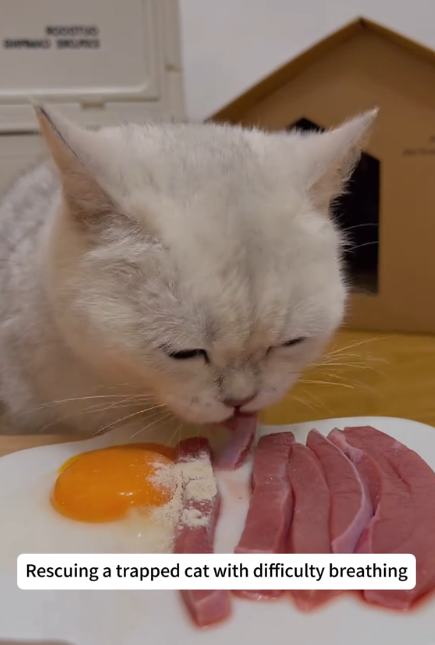
I used a crowbar to create a small gap, just enough to ease the pressure. The cat let out a pained mewl but didn’t attempt to flee. It was too weak. I knew I couldn’t just yank it out—I might cause internal injuries. So I slowly and gently slid a towel under its body and tried to lift while easing the metal edge out of the way.
It took nearly twenty minutes, but finally, with one last effort, the cat came free. It collapsed onto the towel, panting heavily, its body trembling. I wrapped it carefully and carried it into the shade behind my building, where I had a pet carrier ready. I placed the cat inside with the water dish and rushed to my car.
The nearest vet clinic was about fifteen minutes away, and every red light felt like an eternity. I kept talking to the cat the entire ride, urging it to hang on. “We’re almost there. Just a little longer, buddy.”
When I arrived at the clinic, the vet staff immediately saw the urgency. They whisked the cat into the back room for oxygen and assessment. I sat in the waiting area, hands shaking, praying that I hadn’t been too late.
After what felt like hours, the vet came out. “You brought him in just in time,” she said. “He has a mild pneumothorax—his lung was slightly collapsed due to pressure, possibly from blunt force or being stuck for too long. He was also dehydrated and exhausted, but he’s stable now.”
I let out a breath I didn’t realize I’d been holding. Relief washed over me. The vet continued, “We’ll need to keep him for observation, but with care and rest, he should recover fully.”
Over the next few days, I visited the clinic to check on the cat, whom the staff had named “Rusty,” after the rusty dumpster he was found near. With fluids, oxygen, and plenty of rest, Rusty began to improve. His breathing normalized, his appetite returned, and he even let the vet assistants pet him without hissing.
When the vet finally gave the green light for discharge, they asked if I’d be willing to foster him during his recovery. Without hesitation, I agreed.
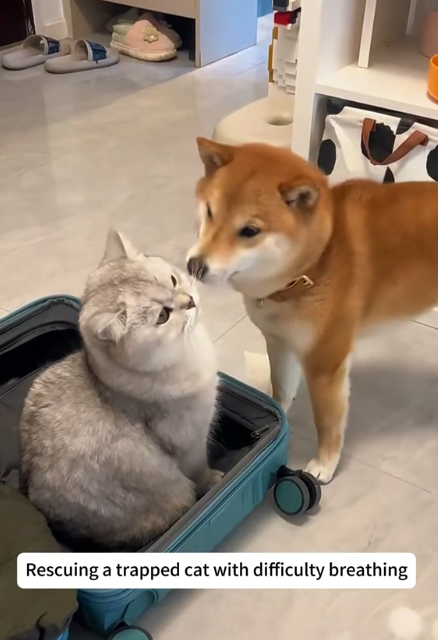
Bringing Rusty home was a heartwarming experience. I set up a quiet space in my living room with soft blankets, food, and toys. Though still shy, he began to show signs of trust. He followed me with his eyes, let me brush him gently, and even purred softly when I sat nearby.
Days turned into weeks, and Rusty blossomed. His fur became glossier, his eyes brighter. He loved sitting by the window, watching birds, or curling up in a sunny spot on the rug. The fear that had once gripped him slowly faded, replaced by calm and curiosity.
I posted his rescue story on social media, hoping to find him a forever home. To my surprise, the story went viral. People were touched by Rusty’s will to survive and the bond we had formed. Messages of encouragement poured in, along with adoption inquiries.
But as the adoption applications came in, I found myself hesitating. Rusty wasn’t just a rescue cat anymore. He was a part of my daily routine, my companion during quiet evenings, and a living reminder of how compassion and patience can save a life.
Eventually, I realized that I didn’t want to give him up. I officially adopted Rusty, and he’s been with me ever since.
Looking back on that hot afternoon, I often wonder what would’ve happened if I hadn’t followed those faint meows. It reminded me that sometimes, all it takes is one person to stop and care—to listen, to act, to rescue.
Rusty’s journey from a trapped, breathless cat to a beloved house pet is one I’ll never forget. He taught me that no act of kindness is ever wasted and that even in the darkest, tightest corners, life still fights to survive.
And sometimes, all that life needs is a helping hand.
